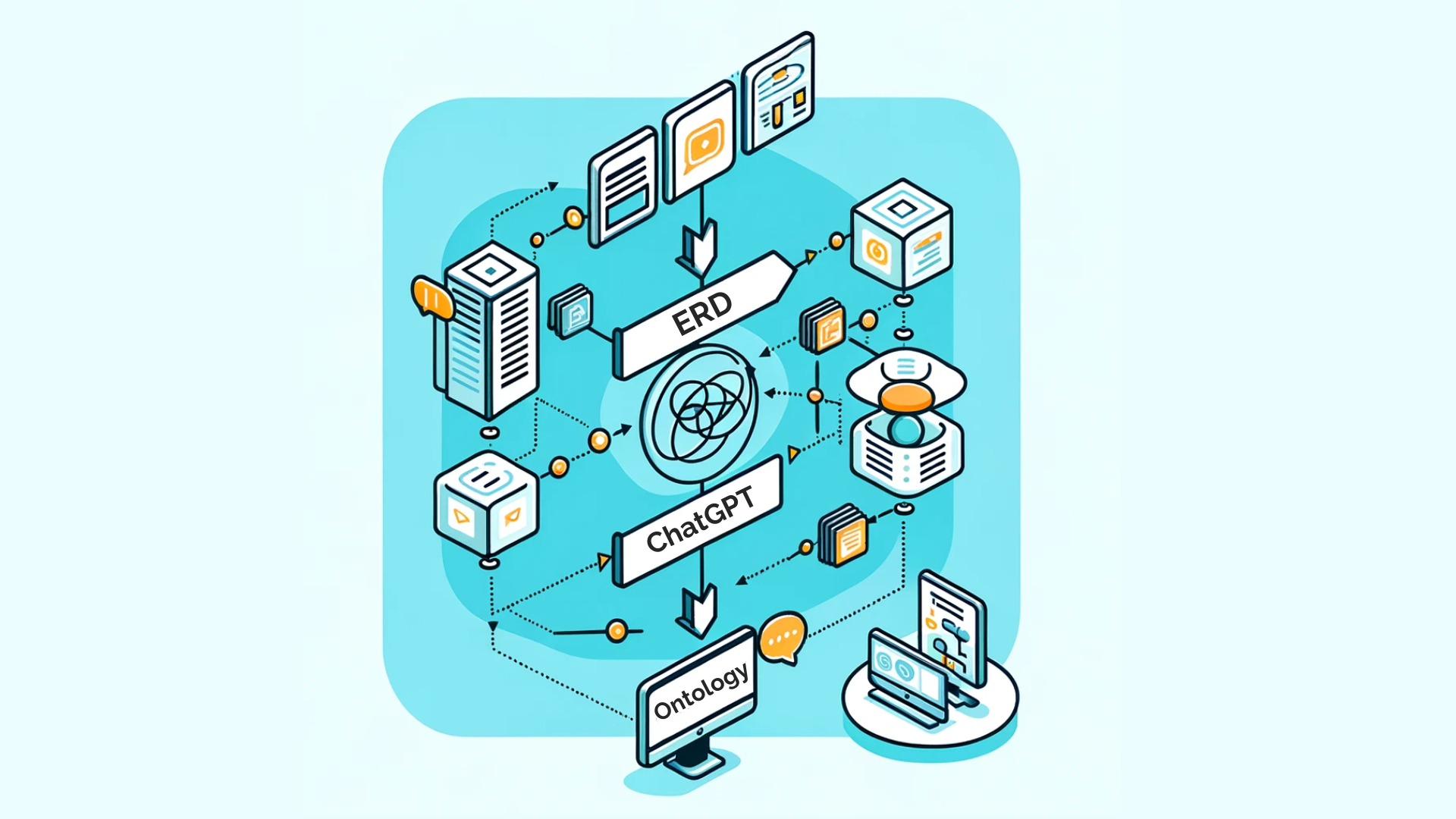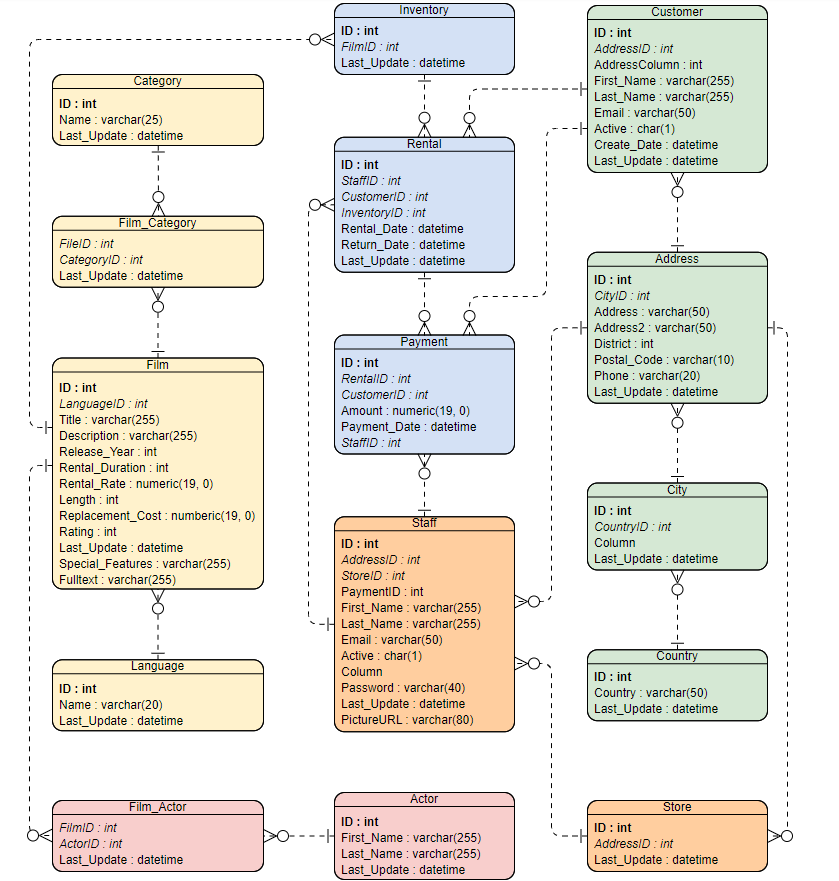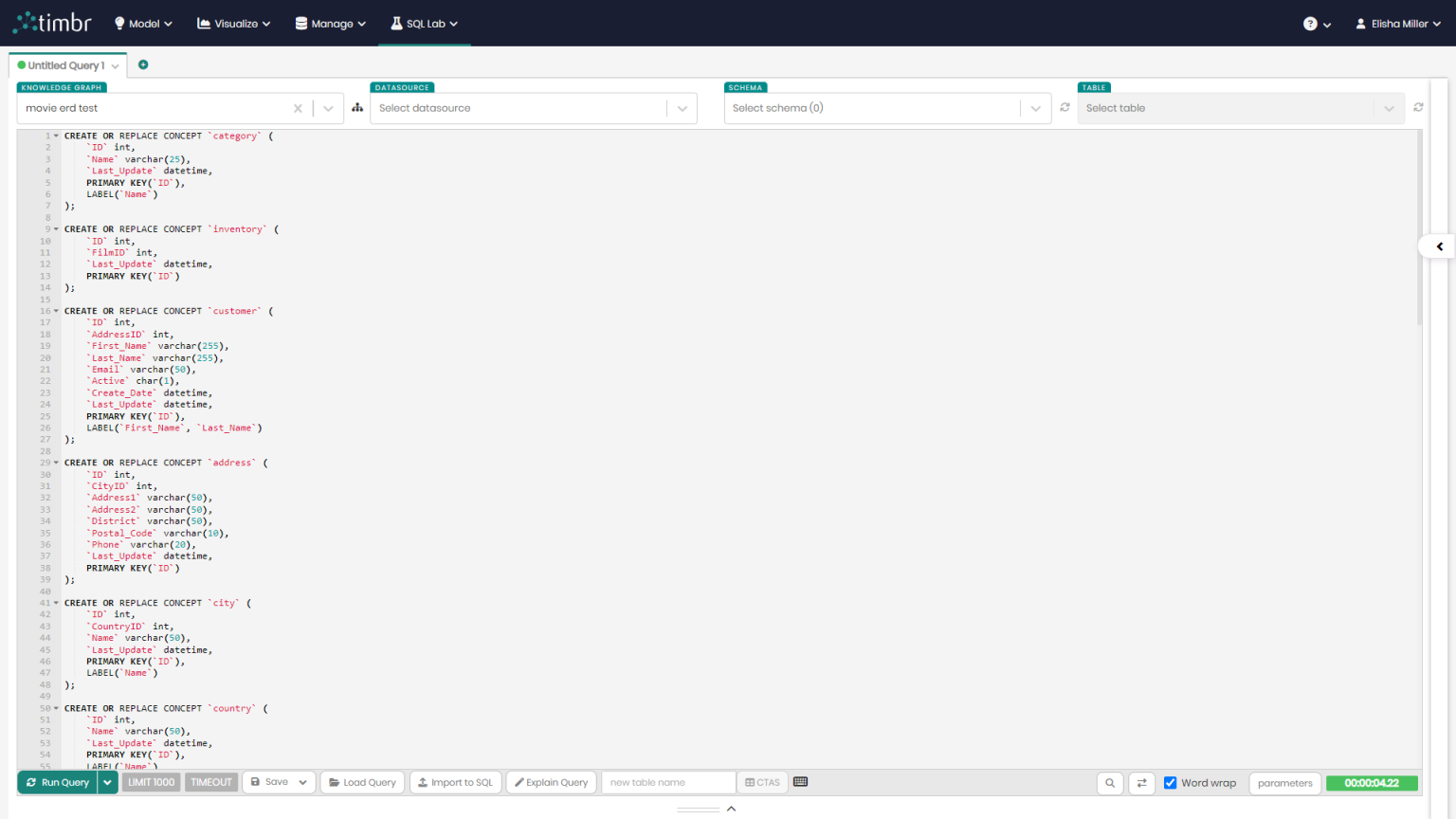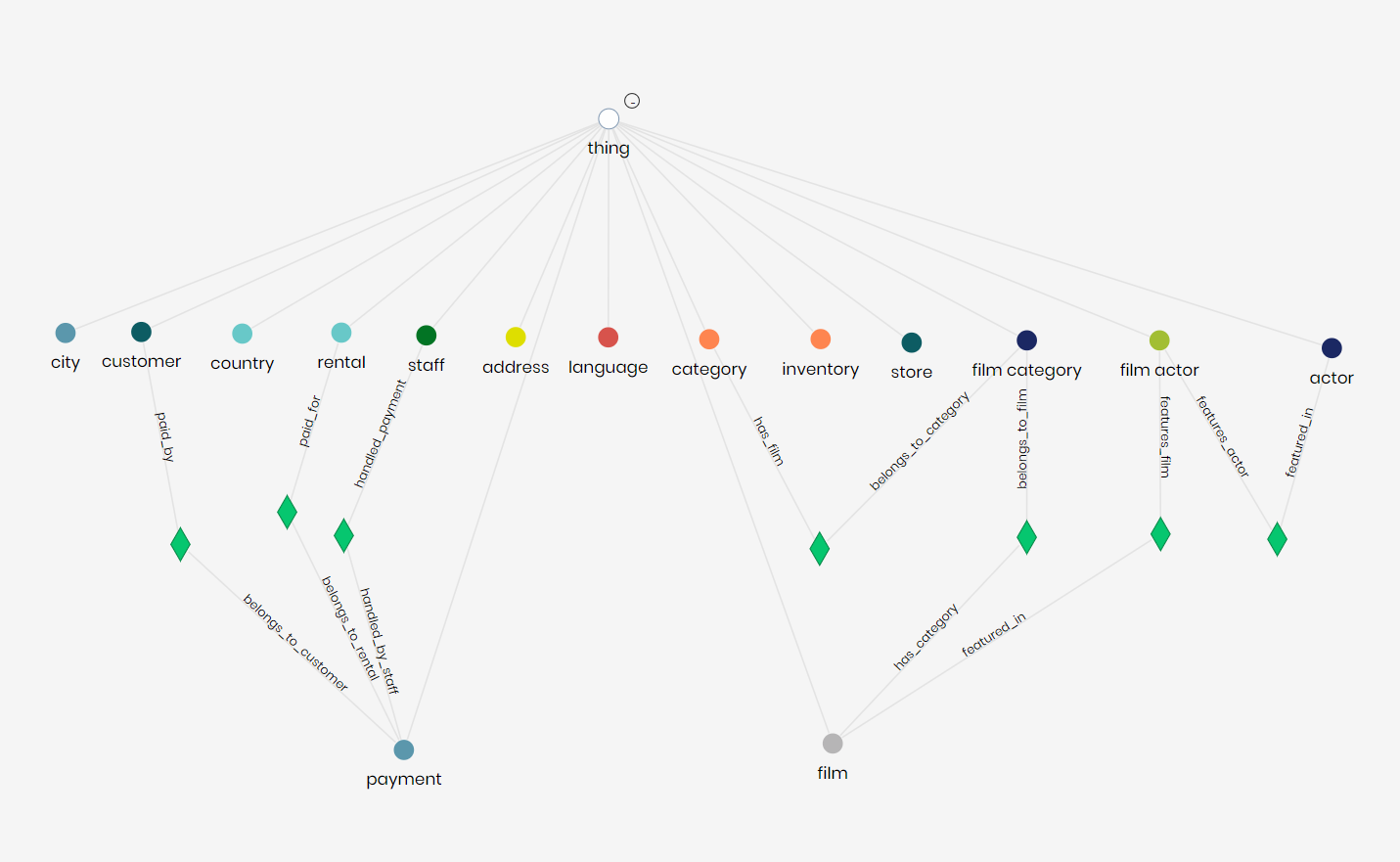Introduction
Timbr users often ask for a straightforward method to transform their legacy data model into an SQL ontology design to help jumpstart the creation of their new intelligent semantic data model. Data teams also enquire how to use existing ERD designs as the basis for new Timbr-powered data products. We are excited to introduce a simple solution that leverages a unique prompt we’ve developed. This prompt allows any LLM, such as ChatGPT, to generate SQL ontology-creation code from an ERD image.
The short video below shows the process of doing so.
The Process
In the video, we demonstrate the process for taking any ERD diagram image and prompting ChatGPT to automatically generate the SQL data definition language (DDL) statements needed to create a corresponding SQL ontology model.
Step 1: ERD Image
We began with a sample ERD for a movie rental database. In Timbr’s Ontology Explorer, we started by showing the empty ontology having only its root concept, “thing”.
Step 2: ChatGPT Translation
Next, we fed the ERD image and our prompt into ChatGPT, instructing it on how to translate the diagram into ontology creation DDL. ChatGPT swiftly generated the DDL code, which we then copied and ran in Timbr’s SQL editor.
Step 3: Building the Ontology
Upon running the generated DDL code, the Ontology Explorer immediately updated to display the full ontology model, complete with all the concepts, properties, and relationships derived from the original ERD.
It’s a remarkably simple yet powerful workflow. In just a couple of minutes, we go from a flat ERD image to a rich SQL ontology model ready for further data integration, queries, and analysis.
Benefits and Applications
This technique opens up new possibilities for easily constructing SQL ontologies from legacy database schemas and diagrams. What used to be a lengthy manual process can now be accomplished in just a few clicks, thanks to the integration of AI tools like ChatGPT and a platform like Timbr.
Practical Applications:
- Legacy Database Migration: Simplify the migration of legacy databases to modern ontology-based systems.
- Data Integration: Enhance interoperability across disparate data sources by creating a unified ontology.
- Analytics and Reporting: Improve data accessibility and query performance for business intelligence and reporting.
The Value of SQL Ontologies
While the process we’ve outlined for converting ERDs to SQL ontologies using ChatGPT and Timbr is remarkably straightforward, it’s important to recognize the unique value and scope of SQL ontologies that make this all possible.
Efficiency and Integration: SQL ontologies are designed to work seamlessly with relational databases. This makes them incredibly efficient for tasks that involve complex queries and data integration across various structured datasets.
Scalability: SQL ontologies are well-suited for large-scale data environments where performance and scalability are critical. They can leverage existing SQL infrastructure, making them a practical choice for most enterprises.
Familiarity: For data professionals already familiar with SQL, adopting SQL ontologies is a natural progression. It allows them to extend their existing skills and tools to ontology-based data modeling without a steep learning curve.
Specific Use Cases: SQL ontologies excel in scenarios where the underlying data is inherently relational and where the goal is to enhance data accessibility, interoperability, and analysis. They are particularly effective in domains like finance, healthcare, and logistics where relational databases are common.
Conclusion
Timbr offers a number of options to create and design intelligent data models. The integration of natural language AI with ontology creation provides a convenient alternative for users to accelerate the engineering of their data model, streamline workflows, and speed up data integration and analysis.
How do you make your data smart?
timbr virtually transforms existing databases into semantic SQL knowledge graphs with inference and graph capabilities, so data consumers can deliver fast answers and unique insights with minimum effort.






